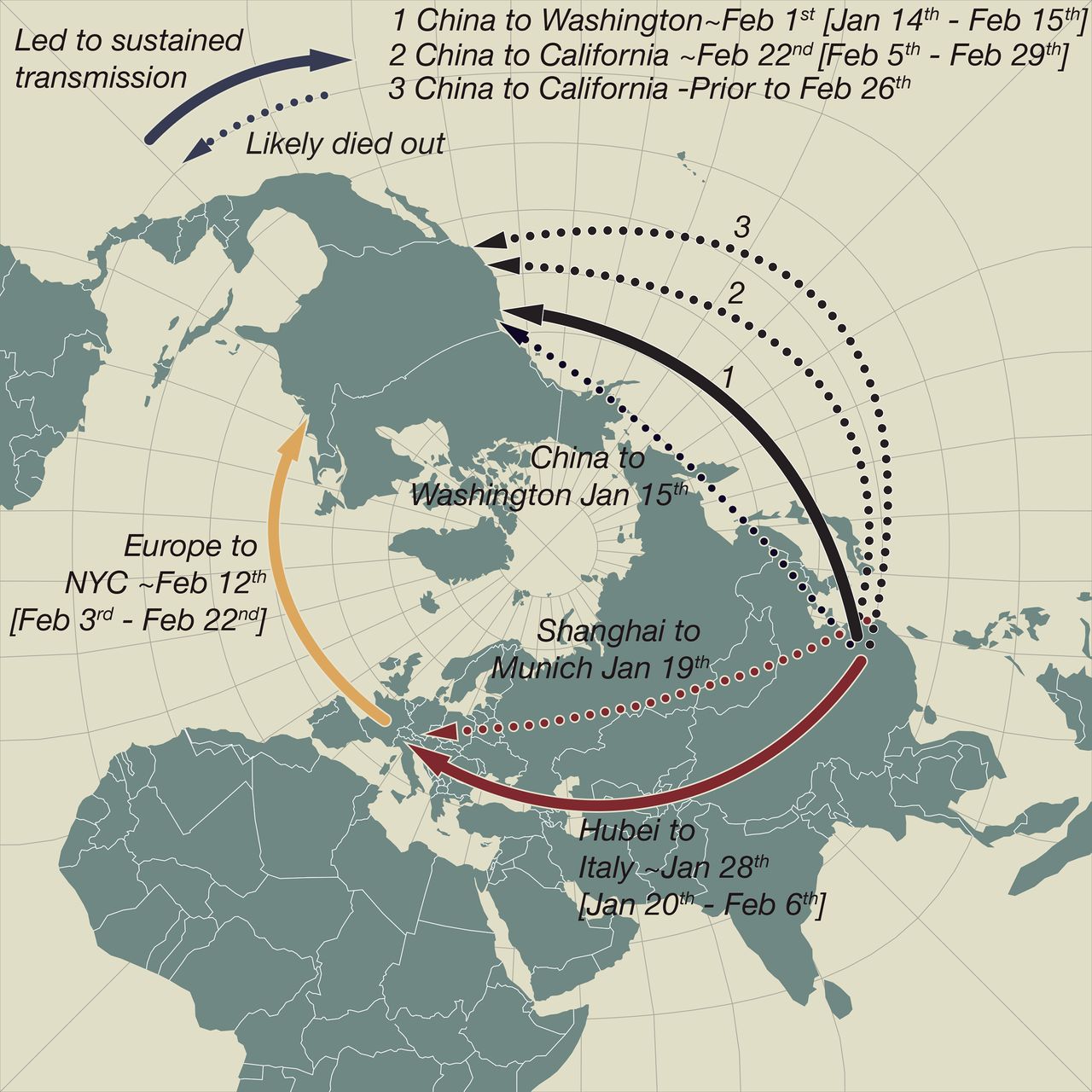News about the coronavirus is coming at us like a fire hose. Both the scientific literature and the popular media are basically all COVID all the time. Here are some recent interesting developments.
1) Phylogenetic analysis suggests that coronavirus arrived in the U.S. between late January and early February. For the uninitiated, phylogenetic analysis is essentially building a "family tree" based on the coronavirus's RNA sequence. Mutations allow scientists to track where the virus goes. For example, if the virus picks up a unique mutation in New York City and later a virus with the same mutation is found in Florida, it is likely that the virus traveled south from the Big Apple to the Sunshine State.
 Building phylogenetic trees can be tricky. Various assumptions have to be made, and then an algorithm computes the most likely family tree. Using this technique, two different papers in the journal Science indicate that SARS-CoV-2 arrived somewhere around February 1 in Washington State. The second paper also examined the establishment of infection in Europe. It concluded that the virus arrived in Munich from Shanghai on January 19. A separate introduction occurred in Italy from China's Hubei Province (in which Wuhan resides) on January 28.
Building phylogenetic trees can be tricky. Various assumptions have to be made, and then an algorithm computes the most likely family tree. Using this technique, two different papers in the journal Science indicate that SARS-CoV-2 arrived somewhere around February 1 in Washington State. The second paper also examined the establishment of infection in Europe. It concluded that the virus arrived in Munich from Shanghai on January 19. A separate introduction occurred in Italy from China's Hubei Province (in which Wuhan resides) on January 28.
Altogether, this data strongly refutes the rumblings from a few months ago that the coronavirus had spread around the world sometime last autumn.
2) A new paper concludes that the coronavirus has resulted in more than 1.2 million years of life lost (YLLs). To get a handle on what that means, consider that a person is 70 years old and whose life expectancy is, say, 75 years. If he dies from coronavirus, that is 5 YLLs. If someone who is 20 years old dies from COVID and has the same life expectancy, that is 55 YLLs.
The data, which was collected from February 1 through July 11, revealed 130,088 American deaths and 1,215,265 YLLs. What this means is on average, a person who died from COVID should have expected to live another 9 years. (Previously, we reported on a paper that concluded that the lockdown was responsible for more YLLs than the virus.)
3) The coronavirus isn't the only game in town. The Seattle area is now reporting a surge in cases of rhinovirus, which is one of the many causes of the common cold. And flu season begins next month. It just goes to show that, despite social distancing, viruses are tough to stop.
4) Some people who are most likely to be affected by coronavirus are also refusing to go to the hospital. A CDC report surveyed more than 5,000 people to determine if they had delayed or avoided medical care due to concerns over the coronavirus. One of its more disturbing findings is that Black Americans were among the most likely to avoid urgent or emergency healthcare (they were edged out by Hispanics), despite the fact that Black Americans tend to have poorer health outcomes (often due to poverty and underlying health conditions) and are the hardest hit by coronavirus. In other words, the people who really should be seeking emergency treatment aren't doing so out of fear. One wonders how many lives that has cost us.




